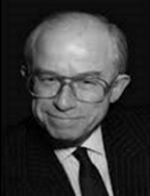Anaesthetics
Anaesthesia is temporary-induced loss of sensation or awareness. It may include analgesia (relief from or prevention of pain), paralysis (muscle relaxation), amnesia (loss of memory), or unconsciousness.
In Scotland, anaesthesia was pioneered in 1847 by James ‘Young’ Simpson’s (1811-1870) use of ether and then chloroform. By 1858, Glasgow Royal Infirmary was spending £19 on Chloroform for anaesthetic purposes. The Scottish Society of Anaesthetists, formed in 1914, is the oldest national society of anaesthetists in the world. The UK Royal College of Anaesthetists was formed in 1992. Since 1948, many advances occurred including regional (as opposed to general) anaesthesia, pain management, and critical care of emergencies.
The University’s Chair of Anaesthetics was founded in 1965, renamed Anaesthesia in 1973, and then repealed and renamed Anaesthesia, Pain and Critical Care in 2007. The first chair (1967-1972) was held by Alexander Forrester.
Professors and their interests
Ronald Millar (Chair 1972-1976) had interests including blood gas measurement in the cerebral circulation, and the effects of anaesthesia on the neurocirculation.
Alastair Spence became Head of the Academic Department at the Western Infirmary in Glasgow in 1969. In 1975, he became a Reader and was appointed to a personal chair between 1978 and 1984. He moved to Edinburgh as Head of Department and as Professor in April 1984. Much of his published output was on the topic of theatre pollution and its effects on staff, and on the adverse effects on patients of inhalational agents. Another large section was on the subject of postoperative hypoxaemia, both the physiology and clinical ramifications and management.
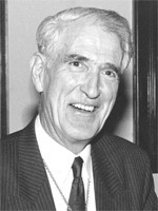 Sir Donald Campbell (1930-2004) held the Chair from 1976-1992. In 1966, he developed a respiratory intensive care unit at the Royal Infirmary together with Dr Michael Telfer and Dr John Reid. His research interests included development of more sophisticated ventilators, new analgesic drugs, and the effects of smoke inhalation on the lungs. He was Dean of the Medical Faculty (1987-1992), Vice-President of the Royal College of Surgeons of Edinburgh, and Chair of the Scottish Committee for Postgraduate Medical Education. He was awarded CBE in 1987, and knighted in 1994.
Sir Donald Campbell (1930-2004) held the Chair from 1976-1992. In 1966, he developed a respiratory intensive care unit at the Royal Infirmary together with Dr Michael Telfer and Dr John Reid. His research interests included development of more sophisticated ventilators, new analgesic drugs, and the effects of smoke inhalation on the lungs. He was Dean of the Medical Faculty (1987-1992), Vice-President of the Royal College of Surgeons of Edinburgh, and Chair of the Scottish Committee for Postgraduate Medical Education. He was awarded CBE in 1987, and knighted in 1994.
A videotaped interview with Professor Campbell in 1985 by Dr Peter Mackenzie is available in the Mitchell Library.
During this period of major activity for the academic department, William Fitch, senior lecturer in Glasgow since 1976, acted as head of department, becoming reader in 1983. He was confirmed as head of department in 1987 and was appointed to a personal chair in 1988.
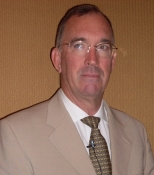
Gavin Kenny was appointed to the Chair in 1996. His interests included the application of microcomputers to anaesthetic practice.
Microcomputers
One of Kenny's most significant achievements was the development of systems for Target Controlled Infusion (TCI) of propofol, alfentanil, remifentanil and other intravenous drugs. He was awarded an MD for his thesis on The Application of Microcomputers to Anaesthesia and Intensive Care. The personal computer had just come of age, the Apple II having been launched in 1977 and the BBC microcomputer in 1981.
Kenny wrote programs for computer-assisted learning and as a form of self-assessment for continuing professional development. The use of the Apple II was extended to clinical care for monitoring critically ill patients receiving life-support in the Intensive Care Unit.
In 1984, a computerised anaesthetic record system was developed, again using an Apple II.
The record system was set up using a light pen for data entry and downloading of data from non-invasive blood pressure devices for analysis or printing later as a complete anaesthetic record.
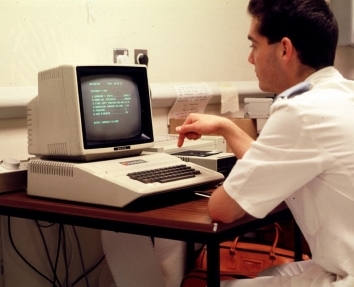
The control of pain after surgery was poor and Kenny with his colleagues developed a system to allow patient-controlled analgesia. This system was also used to collect unbiased data for research studies of analgesic requirements after surgery and, for example, clarified the benefit of suggestions given during surgery on the postoperative analgesia requirements.
Control of blood pressure was an important clinical requirement following cardiac surgery, and Kenny continued the clinical use of the Apple II by using it to provide closed-loop or automatic control of blood pressure after cardiac surgery.
New drugs to provide intravenous anaesthesia had been introduced which offered major clinical benefits for patients but were difficult to administer.
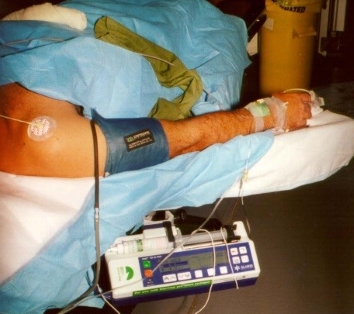
Kenny and his colleagues developed mathematical models which described the metabolism and elimination of these drugs. These models were incorporated into small hand-held computers which allowed the drugs to be administered simply. This led to the development of commercial target-controlled infusion systems (TCI) which are now used throughout most of the world to provide total intravenous anaesthesia. The TCI devices proved successful for use in complex surgery and also were easily portable for use in the war environment.
The mortality from sedation has been estimated at 10-20 times the mortality from anaesthesia. This concern led to the TCI system being combined with the concept of patient control to provide a device to allow patient–controlled sedation. This system now incorporates psychomotor data obtained on-line from the patient to control the administration of propofol and achieve the level of sedation required by the patient while preventing overdosing. This system has now been developed to the point of a commercial prototype and further extensive clinical trials will be conducted with the aim of providing a sedation system which will greatly improve patient safety.
The TCI development led directly to the use of closed-loop control of anaesthesia where the computer system measured automatically the individual patient’s response to anaesthesia. It then delivered the required dose of anaesthetic agent to achieve and then maintain the patient at a desired level of anaesthesia.
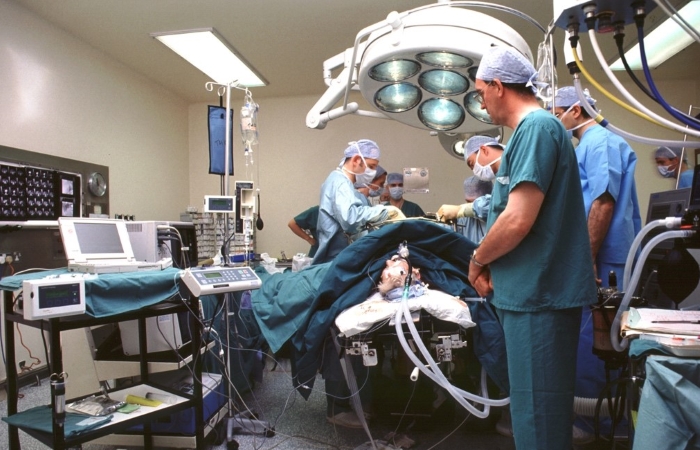
John Kinsella is the current Chair holder (from 2007). He is currently lead clinician for the National Managed Clinical Network (MCN) in Burn Care; and current Chair (from 2014) of the Scottish Intercollegiate Guidelines Network. He has published over 200 peer-reviewed publications.
Professor Gavin Kenny
Images provided by Professor Gavin Kenny


